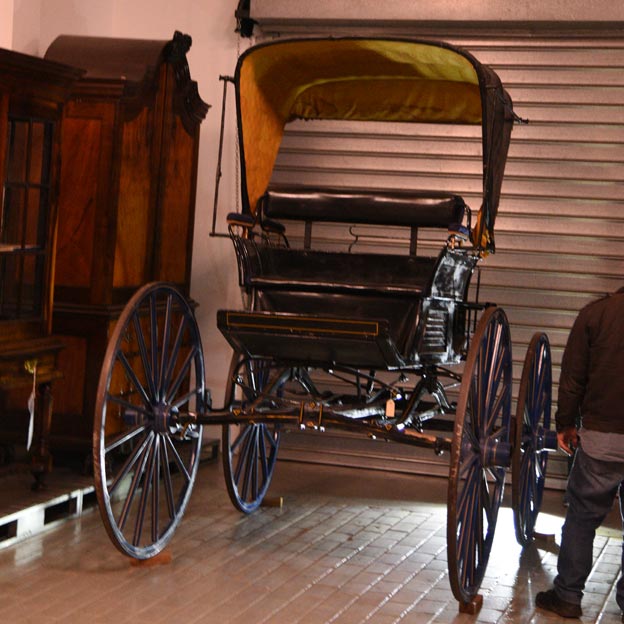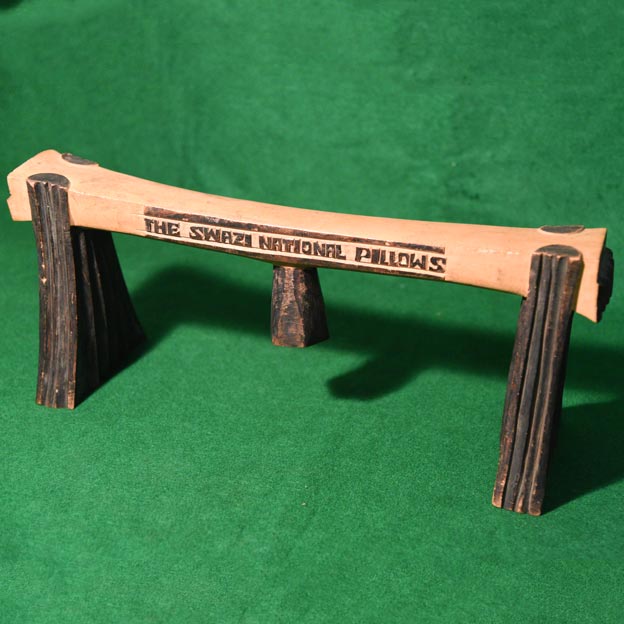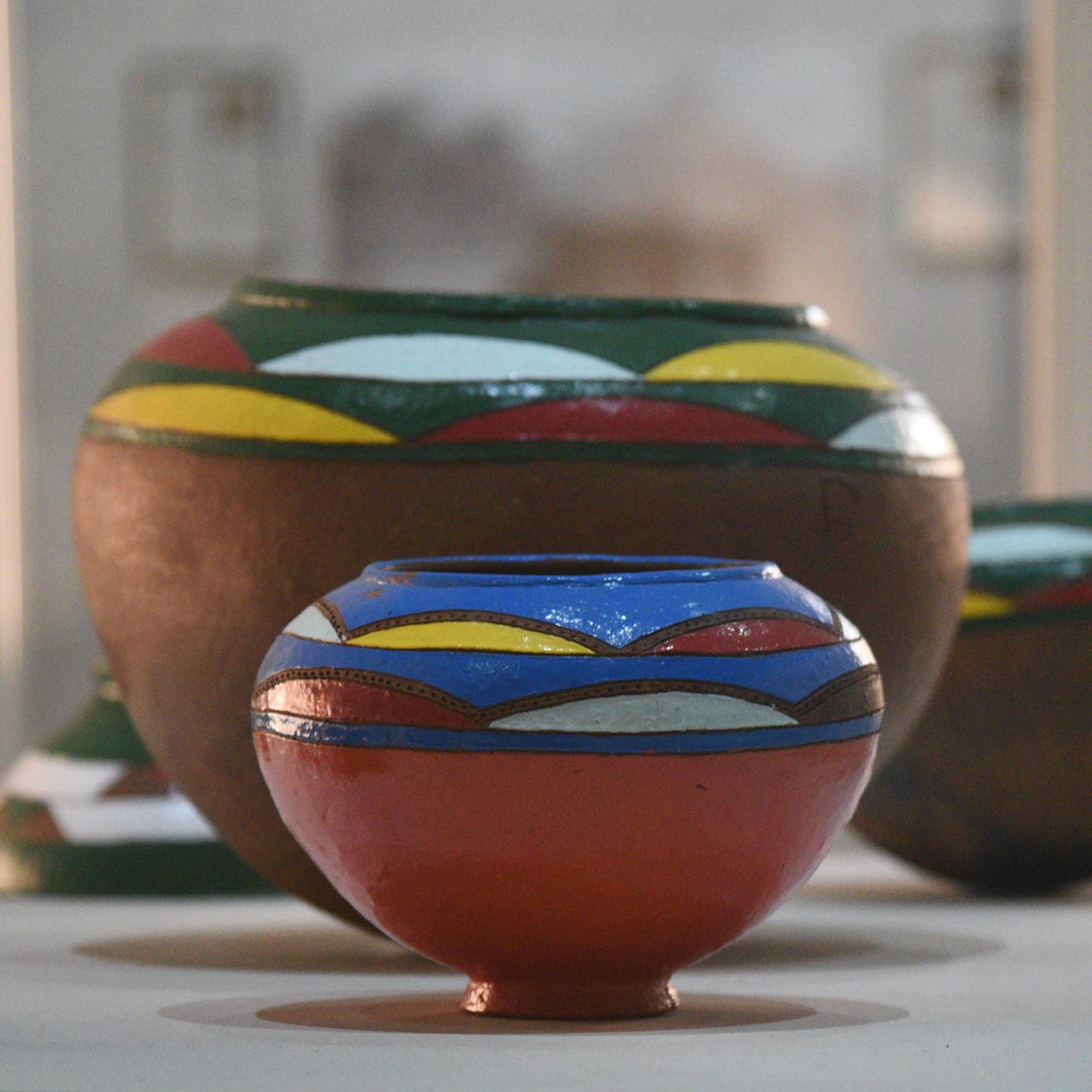

-
Zulu Brass Armband
The solid brass armband is called inqotha, distinguished by its raised notch surface. Inqotha was reserved for the Zulu King and certain individuals who are his advisers and notable warriors, these types of armbands were awarded by the King as a symbol of honor and bravery.

-
Animal-drawn vehicles
Late 19th century
It's called a spider because it looks like a big spider. Normally coaches have smaller diverted wheels at the front, but this Spider has basically the same size wheels. It has a particular object called Twyfelaar Spaider in Afrikaans, doubter spider in English, which means you can choose which side this vehicle is going to drive or walk by. It was drawn by two to four horses, and it was many used on special visits, special occasions.

-
Headrest
Acquired from the Swazi people in Swaziland (now the Eswatini)and donatedto the museum on 12, October 1959.
In several areas of Africa, the human head is regarded as the sage of wisdom and knowledge, and as such, associated with concepts of power. Headrests as items created to support this precious part of the body were consequently revered.Headrest has been described as one of the strongest forms of evidence for the commonality of African traditions from antiquity to the present and one island of the continent to another. Headrest resembling a cow like this one is very common among the Zulu and Swazi people. It is because cattle play a fundamental role in their lives.

-
Dipitsa ke Bophelo Exhibition
Dipitsa ke Bophelo is a Sepedi phrase, translating “Pots are Life” in English. This exhibition seeks to celebrate and acknowledge women in the different stages of life in many aspects.
In many African traditional societies, pots are a part of every stage of life. Whenever a child is born, they are bathed in a pot. When they die, a pot is also broken. When African people communicate with ancestors, pots play a role in the living and the dead.In this display, there are pots that come from the Early Iron Age, the Middle Iron Age, and the Late Iron Age. This shows that women have always been there and contributing to the building of society. A pot is also made out of clay, and clay is the soil that we walk on. When someone dies, they go back to that soil, hence the little pots are life. And it also symbolizes the woman, shows the strength and their resilience.
